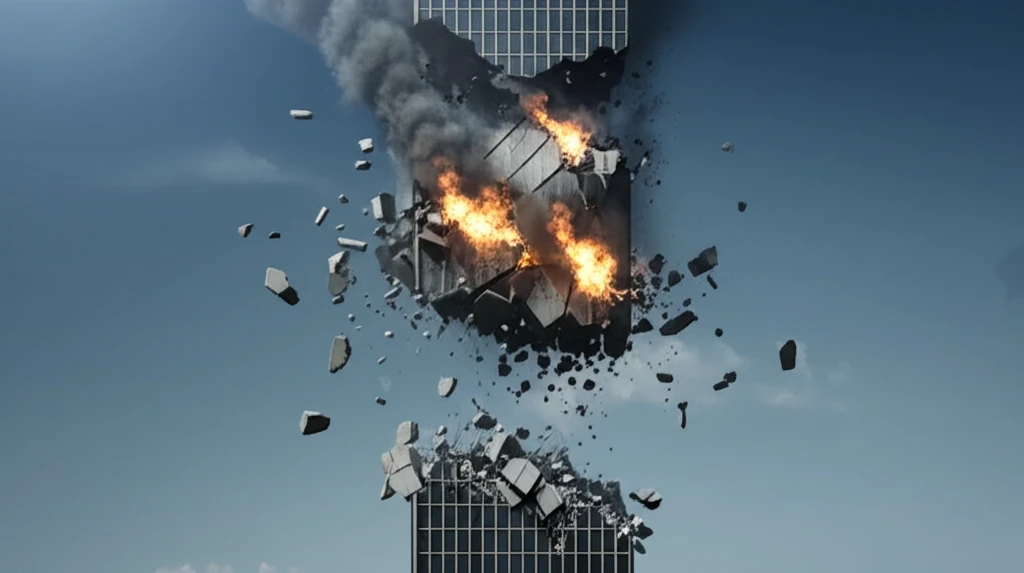
Is Your Concrete Fire-Resistant? Understanding Spalling and How to Protect Your Structures
"Explore the science behind concrete spalling and discover innovative methods to enhance fire resistance in buildings and infrastructure."
In the realm of construction and safety, the fire resistance of building materials is paramount. Concrete, a widely used construction material, is often considered inherently fire-resistant. However, under intense heat, concrete can suffer a phenomenon known as 'spalling,' where layers of the surface break off, potentially leading to structural failure. This poses a significant risk to the integrity of buildings and the safety of occupants.
Ultra-high performance concrete (UHPC), known for its superior strength and durability, is increasingly used in modern construction. Yet, even UHPC is susceptible to spalling under fire conditions. Understanding the mechanisms behind spalling and developing effective preventative measures are crucial for ensuring the safety and longevity of concrete structures.
Recent research has focused on innovative methods to enhance the fire resistance of UHPC, examining the role of various additives and microstructural properties in mitigating spalling. This article delves into the science behind concrete spalling, exploring the latest findings and practical strategies to protect your structures from the devastating effects of fire.
What is Concrete Spalling and Why Does It Happen?

Concrete spalling is the fracturing and detachment of layers or pieces of a concrete surface when exposed to high temperatures. This occurs due to a combination of factors, primarily related to heat-induced stress and moisture within the concrete.
- Thermal Gradients: When concrete is exposed to fire, the surface heats up much faster than the interior. This creates a significant temperature difference, or thermal gradient, within the material. This gradient generates internal stresses as the hotter surface expands while the cooler interior resists deformation.
- Moisture Buildup: Concrete contains moisture in its pores. As the surface heats, this moisture turns into steam. If the concrete is dense and impermeable, the steam cannot easily escape. This leads to a buildup of internal pressure.
- 'Moisture Clog' Effect: As steam moves from the hot surface towards the cooler interior, it can condense in cooler regions, increasing saturation and creating a barrier. This "moisture clog" further obstructs the escape of vapor, intensifying the pressure.
- Tensile Strength Exceeded: When the internal pressure from the expanding steam and thermal stresses exceeds the tensile strength of the concrete, the surface layers fracture and spall off.
Protecting Our Structures: A Path Forward
The threat of concrete spalling during fires is a serious concern, but ongoing research offers promising solutions. By understanding the underlying mechanisms and implementing effective preventative measures, we can significantly enhance the fire resistance of concrete structures, ensuring the safety of our buildings and the people who occupy them. As new technologies and materials emerge, the future of fire-resistant construction looks brighter than ever.
